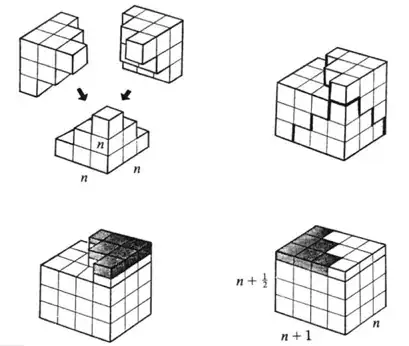I'd like to prove to my (undergraduate, not math-major) students that $$ \lim_{n\to\infty} \frac{1}{n^3}\sum_{k=1}^n k^2 =\frac{1}{3}, $$ to later show them that this can be interpreted as taking Riemann sums for the integral of $x^2$. Of course I could pull out of my hat the formula $\sum_{k=1}^n k^2 = \frac{n(n+1)(2n+1)}{6}$, which makes it obvious, or start from the telescopic sum $$\sum_{k=1}^n ((k+1)^3-k^3) $$ and do some algebra. Neither of them sounds very convincing to me, since they will be new ideas for them, not immediate to grasp, and this should not be the central point of my lecture.
Is there a simpler way to work out this limit, without going through a proof for the value of the sum?

That would be the why the $n^3$ makes an appearance.
– JP McCarthy Mar 19 '14 at 13:26